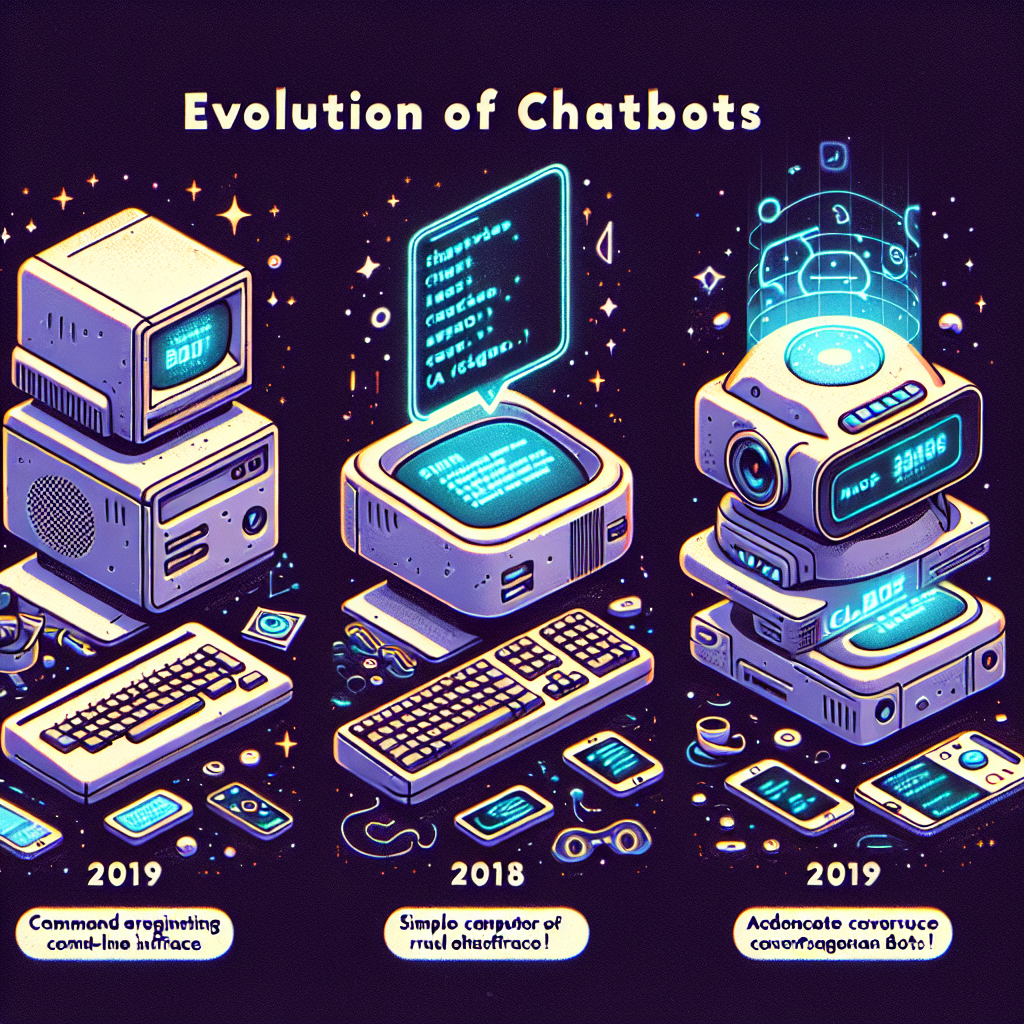The Evolution of Chatbots: Conversational AI in Action
In recent years, chatbots have become increasingly popular as a way for businesses to interact with customers in a more efficient and personalized manner. These AI-powered programs are designed to simulate conversation with users, providing information, answering questions, and even completing transactions. As chatbots continue to evolve, they are becoming more advanced and sophisticated, offering a wide range of capabilities that go beyond simple text-based interactions.
The history of chatbots can be traced back to the 1960s, when a program called ELIZA was developed by MIT professor Joseph Weizenbaum. ELIZA was designed to simulate a conversation with a psychotherapist, and although it was limited in its capabilities, it sparked interest in the potential of AI-powered chatbots. Over the years, chatbots have become more sophisticated, with advancements in natural language processing, machine learning, and other AI technologies driving their development.
Today, chatbots are used in a wide range of industries, from customer service and e-commerce to healthcare and education. They can be integrated into websites, messaging apps, social media platforms, and more, providing users with a convenient and efficient way to interact with businesses and organizations. Chatbots can be programmed to handle a variety of tasks, such as answering frequently asked questions, providing product recommendations, scheduling appointments, and even processing payments.
One of the key features of chatbots is their ability to understand and respond to natural language input. This is made possible through natural language processing (NLP) technology, which allows chatbots to interpret and analyze human language in real-time. NLP enables chatbots to understand the context of a conversation, identify the intent behind a user’s message, and generate relevant responses. This enables chatbots to engage in more natural and meaningful conversations with users, improving the overall user experience.
Another important aspect of chatbots is their ability to learn and improve over time. Machine learning algorithms enable chatbots to analyze data, identify patterns, and make predictions based on past interactions. This allows chatbots to personalize responses based on user preferences, anticipate user needs, and continuously optimize their performance. As chatbots interact with more users and gather more data, they become increasingly intelligent and effective at providing assistance.
In addition to text-based interactions, chatbots are also incorporating other forms of communication, such as voice and visual input. Voice-enabled chatbots use speech recognition technology to understand spoken commands and respond with spoken answers, making interactions more natural and intuitive. Visual chatbots can interpret images, videos, and other visual content to provide more relevant and personalized responses. These multimodal capabilities are expanding the possibilities for chatbots, enabling them to engage with users in new and innovative ways.
As chatbots continue to evolve, they are also becoming more integrated with other AI technologies, such as natural language generation (NLG) and sentiment analysis. NLG enables chatbots to generate human-like responses in natural language, making conversations more engaging and interactive. Sentiment analysis allows chatbots to understand the emotions and attitudes of users, enabling them to tailor their responses accordingly. By combining these technologies, chatbots can provide more personalized and empathetic interactions with users.
The future of chatbots holds even greater potential, with advancements in AI, machine learning, and other technologies driving further innovation. Chatbots are expected to become more intelligent, autonomous, and versatile, capable of handling complex tasks and interacting with users in more sophisticated ways. They will be able to provide personalized recommendations, offer proactive assistance, and even engage in deeper, more meaningful conversations with users. Chatbots are also likely to become more integrated with other emerging technologies, such as virtual reality, augmented reality, and Internet of Things (IoT) devices, enabling them to provide more immersive and interactive experiences.
FAQs
Q: How do chatbots work?
A: Chatbots work by using natural language processing (NLP) technology to interpret and analyze human language input. They can understand the context of a conversation, identify the intent behind a user’s message, and generate relevant responses. Chatbots can be programmed to handle a variety of tasks, such as answering questions, providing information, and completing transactions.
Q: What industries are using chatbots?
A: Chatbots are used in a wide range of industries, including customer service, e-commerce, healthcare, education, and more. They can be integrated into websites, messaging apps, social media platforms, and other channels to provide users with a convenient and efficient way to interact with businesses and organizations.
Q: How can chatbots improve customer service?
A: Chatbots can improve customer service by providing instant responses to customer inquiries, reducing wait times, and offering personalized assistance. They can handle a high volume of inquiries simultaneously, freeing up human agents to focus on more complex issues. Chatbots can also provide 24/7 support, enabling businesses to offer round-the-clock customer service.
Q: What are the benefits of using chatbots?
A: Some of the benefits of using chatbots include increased efficiency, improved customer service, cost savings, and enhanced user experience. Chatbots can automate repetitive tasks, handle a high volume of inquiries, and provide instant responses to users. They can also personalize interactions, offer proactive assistance, and engage users in more natural and meaningful conversations.
Q: How can businesses implement chatbots?
A: Businesses can implement chatbots by choosing a chatbot platform or building a custom chatbot solution. There are various chatbot platforms available that provide pre-built templates, tools, and integrations to help businesses create and deploy chatbots quickly. Businesses can also work with developers to build custom chatbots tailored to their specific needs and requirements.
In conclusion, the evolution of chatbots is transforming the way businesses interact with customers, providing a more efficient, personalized, and engaging experience. As chatbots continue to advance, they are becoming more intelligent, versatile, and integrated with other AI technologies, enabling them to provide more sophisticated and immersive interactions with users. With the potential for further innovation and integration with emerging technologies, chatbots are poised to play an even greater role in shaping the future of customer engagement and service.

